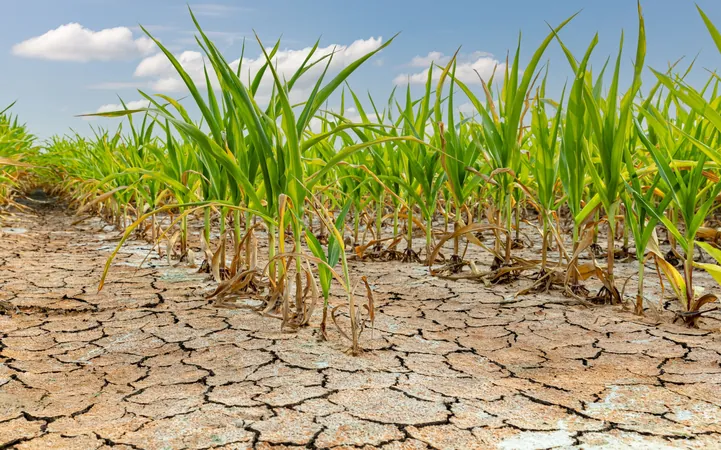
Drought Survivors: How Plants Switch to Survival Mode
2025-09-01
Author: Daniel
When plants experience drought, growth comes to a standstill—no water means no activity. But what happens when rain finally arrives? You might assume that plants would quickly rebound and resume their growth. Surprisingly, that's not the case.
Recent research unveils that plants enter a protective state instead of launching into growth. Their new priority? Fending off potential threats.
The Resilient Arabidopsis thaliana
Scientists turned to the Arabidopsis thaliana, a small, lab-friendly plant, to shed light on this intriguing phenomenon. With a genetic structure akin to vital crops like wheat, rice, and tomatoes, this plant has long been a favorite for genetic studies.
During drought, Arabidopsis resorts to survival tactics: it closes its stomata, slows metabolism, and conserves precious resources. But when the rain returns, it acts quickly.
Rehydration's Hidden Dangers
As water floods back into the plant, the stomata reopen, allowing for quick rehydration. However, this also invites harmful bacteria, fungi, and viruses into the mix. Instead of rushing to grow, plants prioritize their defense mechanisms.
Decoding Plant Defense Mechanisms
Researchers from the Salk Institute employed groundbreaking technology to observe cellular responses immediately following rehydration. Focusing on individual cell responses rather than averaging across tissue allowed for an unprecedented understanding of these dynamics.
Just 15 minutes post-watering, plants began activating thousands of defense genes, launching what scientists termed "Drought Recovery-Induced Immunity" (DRII). This swift immune response equips the plant to combat infections while still vulnerable.
Natanella Illouz-Eliaz, the study's lead author, marveled, "We would have missed this discovery had we not captured the data at these early time points."
The DRII Phenomenon Across Crops
Further investigations confirmed that tomatoes, both wild and cultivated, employed a similar immune response after drought. This suggests DRII may be a widespread phenomenon in various crops sharing genetic ties with Arabidopsis.
Understanding DRII could be key to cultivating more resilient crops, vital as droughts become increasingly severe.
Uncovering Genetic Mysteries
The rapidity of this immune response poses new questions: How swiftly do signals travel from plant roots to leaves? What triggers these signals?
Experts are keen to explore how DRII can be leveraged in agriculture, potentially leading to crops engineered to activate these defense responses more effectively, safeguarding yields amid fluctuating weather.
Joseph Ecker, a senior author of the study, emphasized, "Drought recovery isn't passive; it’s a dynamic reprogramming of the plant’s immune system. Understanding these mechanisms could be transformative for crop resilience."
The Future of Farming in a Dry World
As drought conditions worsen globally, resilient crops that can rebound swiftly and defend themselves will be crucial for food security. This study illustrates that the moments just after rehydration may hold as much significance as the drought itself.
Instead of waiting, plants take decisive action to ensure survival—a behavior we are just beginning to uncover. This groundbreaking research was published in the journal Nature Communications, setting the stage for future advancements in agricultural resilience.




 Brasil (PT)
Brasil (PT)
 Canada (EN)
Canada (EN)
 Chile (ES)
Chile (ES)
 Česko (CS)
Česko (CS)
 대한민국 (KO)
대한민국 (KO)
 España (ES)
España (ES)
 France (FR)
France (FR)
 Hong Kong (EN)
Hong Kong (EN)
 Italia (IT)
Italia (IT)
 日本 (JA)
日本 (JA)
 Magyarország (HU)
Magyarország (HU)
 Norge (NO)
Norge (NO)
 Polska (PL)
Polska (PL)
 Schweiz (DE)
Schweiz (DE)
 Singapore (EN)
Singapore (EN)
 Sverige (SV)
Sverige (SV)
 Suomi (FI)
Suomi (FI)
 Türkiye (TR)
Türkiye (TR)
 الإمارات العربية المتحدة (AR)
الإمارات العربية المتحدة (AR)